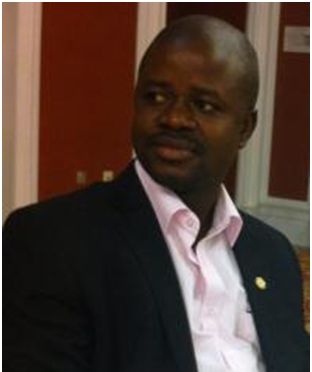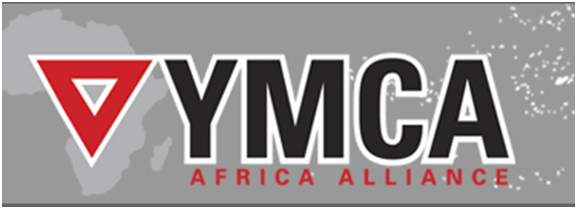John Baimba Sesay speaks on “What Africans Paid For South Africa’s Freedom”
A presentation made by John Baimba Sesay, Sierra Leone Information Attache, Beijing, China
Courtesies: Kindly allow me, on behalf of my Ambassador and Embassy thank Brand South Africa, China Office for inviting me to make a presentation on the theme “What Africans Paid For South Africa’s Freedom”, even as that country is marking 20years of democracy.
Though on short notice, making such a presentation to scholars from counties like Morocco, Algeria, Z imbabwe, South Africa, African PhD students in leading Chinese Universities and Chinese journalists
could be challenging, but at the same time a learning process for me, too.
Background:
Apartheid was all about racial discrimination. The enactment of apartheid laws in 1948 led to the institutionalization of racial discrimination. This was felt in every aspect of human life.
Intervention by OAU:
The OAU and now AU came into been and helped propel the Independence of the entire African Continent. From 1963, following its formation, downward;
a. It immediately called for sanctions against South Africa and Portuguese goods and also agreed that each member state would contribute 1% of their budget to the OAU fund for liberation.
Volunteer liberation fighters started propping up and a Liberation Committee set up to give aid to the liberation movements.
b. The mandate of the committee was to soon expand to cover the promotion of an international campaign against apartheid, under the auspices of the UN. The committee closely followed developments in South Africa and presented annual and special reports to the UN General Assembly and the Security Council, with recommendations for action.
c. In April 1969 fourteen independent black states from Central and East Africa met in Zambia to discuss African issues. The meeting resulted in the formulation of the Lusaka Manifesto, a statement
outlining the diplomatic position of independent African states. It called for black majority rule for all states in Africa and for human equality and dignity throughout Africa and rejected racism.
African Leaders Took a Centre stage:
Individual African governments made enormous financial and material contributions to the work of the South African liberation movements.
First, diplomacy was a major tool used by Africans in the fight against apartheid not until in 1962, when African members of the UN, through a resolution–Number 1761 (XV III)–requested for a “Special Committee against Apartheid”. This committee was to become, later, the main instrument of the UN for promoting and monitoring action against apartheid. It informed world opinion of the situation in South Africa and promoted action against apartheid by UN bodies and agencies.
During his undercover trip across Africa in 1962, Nelson Mandela was received with munificence by all the African leaders he met. Several African leaders at the time played crucial roles in ensuring a free South Africa. Few examples below:
a) Through his writings/poetry, Leopold Sengor of Senegal spread the gospel of Negritude which put the Black race into prominence, worldwide. Africans in the diaspora took the anti-apartheid banner and fought with the rest of Africa for the abolition of apartheid.
b) Sekou Toure of Guinea and Modibo Keita of Mali joined Kwameh Nkrumah of Ghana as trail blazers to drive home to West Africa the imperative need to free South Africa from White minority domination.
c) Julius Nyrere of Tanzania was also a leading figure in the fight against apartheid in South Africa
d) Ghana was a leading force, in rallying support against apartheid. Nkrumah in 6 March 1957, spoke about the need to liberate the whole of Africa, when he said, in his independence speech, that “the independence of Ghana is meaningless unless it is linked up with the total liberation of the whole African continent”
e) Fourah Bay College of Sierra Leone, the oldest institution of Higher Learning in Africa, South of the Sahara was an invaluable academic training ground, without territorial limitation(s) for Freedom Fighters from the SADEC and beyond.
The 1960 Sharpeville massacre in South Africa (Nkrumah’s intervention)
* Occurred in March 21, 1960 following shooting on Black South African protesters. There was a serious intensification of oppressive measures against opponents of the apartheid regime;
* Nkrumah sent an aircraft to wait in Francistown (now Botswana) to ferry to Ghana, any South African who managed to reach the safety of Francistown. Among South Africans who came to Ghana, were Ronald Segal, editor of a magazine called Africa South, and, H. M. Basner, who was given important posts (Basner became an influential columnist for Nkrumah’s paper, The Ghanaian Times)
* In his drive to free Africa including South Africa, Nkrumah was deposed while inflight to China in 1966. Ghana and Africa as a whole was robbed of a Freedom Fighter President. The ramifications are far reaching.
Financial Support:
Mandela is believed to have received a gift of thousands pounds sterling that Sir Ahmadu Bello made to the ANC. This was same with MKO Abiola a Nigerian business man. Lesson learnt: Indicative that
when it came to South Africa, almost all African leaders rallied round to help, without consideration of the existing ideological differences.
June 16, a Tragic Moment for Africa:
Afrikaans was the “language of the oppressor” and it resulted in growing resentment in teachers as well as students. It was on June 16th June 1976 when the resentment crossed all thresholds; thousands of black students went on a protest rally from their schools to Orlando Stadium. Students were killed and Africa was united in condemning the aggression and brutality of the white. Since then, 16th June is celebrated as day of the African child.
Conclusion:
The price that Africans paid for South Africa’s freedom is beyond measure. The struggle for a free South Africa largely helped in forging African unity amongst nations in the continent.
During the period when Fire Brand African leaders were spreading the South African gospel of Race Equality regardless of Color, a few others were spreading the Red Carpet for Apartheid South Africa to Walk Tall.
Without prejudice, the list of African countries that suffered the most with apartheid SA could be drawn from the ages of African Diplomatic Missions here in Beijing.
Stay with Sierra Express Media, for your trusted place in news!
© 2014, https:. All rights reserved.




